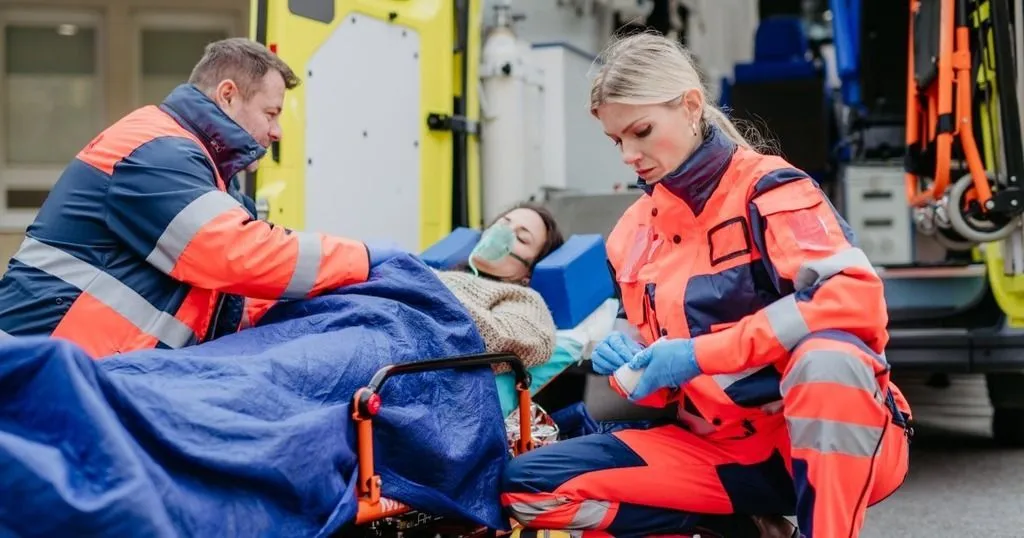How stress and emotions can affect performance
Medical first responders need to undergo extensive trainings to maintain and enhance their skills. Malfait and her team developed a methodology to measure the management of stress and emotions.
Posted by
Published on
Wed 10 Apr. 2024
Topics
| Education | Simulation-based Training | Coding Behavior | FaceReader | The Observer XT | Viso |

Every day, medical first responders (medics, nurses, and physicians) bravely rush into the heart of emergencies, ready to save lives and provide critical care. While their dedication and expertise are commendable, what often goes unnoticed are the emotional challenges and stressors they face behind the scenes. Witnessing trauma, grappling with loss, and navigating their own vulnerability, these heroes confront a myriad of emotional and stressful hurdles in their line of duty.
Regular practice through simulation training is essential
Because they face such complex situations, first responders need to undergo extensive trainings. It enables them to maintain and enhance their skills and to practice various procedures. They will engage in realistic scenarios that closely mimic actual emergency situations. They can practice to coordinate their efforts as a team, delegate tasks, and make critical decisions.
By recording these simulation training sessions on video, they get a detailed picture of the situation. By debriefing after the sessions, responders can identify errors, gaps in knowledge, or areas for improvement and implement corrective measures accordingly. This is a vital component of first responders' professional development.
Also read: 3 debriefing steps to evaluate a training session
Understanding how stress and emotions can affect technical performance
In addition to improving both technical and non-technical skills, these training sessions must also address how to recognize and effectively manage emotions and stress. Both individually and at a team level.
The research team of Malfait in Brussels, Belgium, focused on this topic in their study. They developed a methodology to measure the performance on technical skills alongside the psychophysiological load during simulation training sessions.
Recording observations for detailed analysis
In the simulation lab, equipped with multiple pan-tilt-zoom cameras and ceiling microphones, integrated with help of Viso software, participants were invited to perform several medical technical tasks. For example, a cricothyroidotomy - an intervention to help a patient breathe better, such as in cases of severe airway obstruction, trauma, or respiratory failure.
Live observations were conducted to monitor participants’ performances. They also recorded observations for detailed retrospective microanalysis, using The Observer XT. Therefore, several components of the medical technical skill were coded by an expert.
Viso offered the ability to adjust the orientation and zoom of the cameras during recording. Moreover, because images from multiple cameras were available, it became possible to observe the performances from different angles. This created more detailed views and made coding more accurate.
Advantages of using The Observer XT for coding and analysis
The researchers took advantage of the functionality to pause and play back videos unimpededly at recorded speed, as well as at half-speed, at one fifth- and one twenty-fifth of the speed. Moreover, they appreciated measurement of time intervals and the possibility to perform more in-depth analysis.
FREE WHITE PAPER: How to set up a coding scheme
Download here the FREE white paper 'How to set up behavioral coding' and get 7 tips about:
- Defining your behavior group
- Point events
- Coding from a diversity of sources
Managing stress and emotions
The team also wanted to see how much stress the participants felt during the simulation training and how they managed their individual resources, such as coping skills, the ability to bounce back, and the belief in one’s ability. Because stress occurs when there is a perceived gap between the demands of the situation and the individual's perceived ability to cope with those demands.
The researchers recorded facial expressions using FaceReader and performed voice analysis using Matlab and PRAAT. Both methods rely on systematic measurements of arousal and emotion. Combining both types of analyses allowed them to quantify arousal and valence, according to the circumplex model of emotions.
An important condition was that no invasive sensors were needed to capture the information they wanted.
FREE WHITE PAPER: FaceReader methodology
Download the free FaceReader methodology note to learn more about facial expression analysis theory.
- How FaceReader works
- More about the calibration
- Insight in quality of analysis & output
Benefit from a unique combination of simultaneous analysis
The study of Malfait and her team offered insight into how first responders perform during simulation training or real-life situations. Big benefits of their developed method lies in the unique combination of simultaneous analysis of technical skill and assessing psychophysiological load. But also in using non-invasive and objective methods, like facial expression analysis and voice analysis, to let us understand the stress level without needing people to tell us, and without interrupting the simulation.
Reference
Malfait, A.; Puyvelde, M.; Detaille, F.; Neyt, X.; Waroquier, F. & Pattyn, N. (2023). Unveiling Readiness of Medical First Responders in Simulation Trainings: Insights beyond Queries. In: Jay Kalra (eds) Emerging Technologies in Healthcare and Medicine. AHFE International Conference. AHFE Open Access, vol 116. AHFE International, USA. http://doi.org/10.54941/ahfe1004375
Related Posts

The influence of teachers' motivation behaviors on students' engagement

